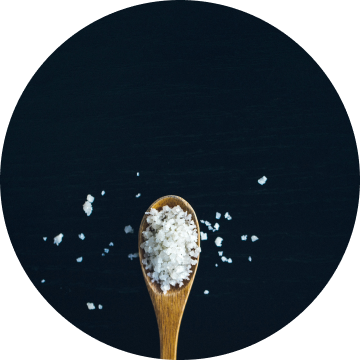Introduction
The world’s food systems have a negative impact on human and planetary health. The triple burden of global malnutrition – hunger, obesity, and micronutrient deficiencies – is increasing in almost every country. Food is also the sector with the biggest impact on the environment, making sustainable production and consumption a critical and urgent priority. Food companies can play an important role in enabling healthy and sustainable diets through responsible product development, reformulation, and fortification. This briefing provides guidance for food retailers and manufacturers to understand how to use product development and fortification to enable healthier and more sustainable diets, with a focus on plant-based foods, including meat and dairy alternatives, as well as vegetables and whole grains.
Product development and fortification for plant-based foods
Although fortification typically involves adding nutrients to food products during processing, nutrients can also be added to crops during the production or growing process (this is referred to as ‘biofortification’).1 2 Food products can also be fortified indirectly by including micro-nutrient-rich ingredients in their formulation. A common example is the use of iodised salt in products, instead of normal table salt.
Fortification and indirect fortification are processes that can be adopted directly by product manufacturers, while biofortification, genome editing, and the classical breeding of selected varieties of crops with elevated nutrients, are dependent on implementation by producers, and thus require supply-chain collaboration.
A holistic product-development strategy for plant-based foods should be based on three key principles:
- Address common nutrient deficiencies.
- Fortify products with key nutrients and ensure that others that are naturally occurring are retained during the production process.
- Limit nutrients of concern.

Addressing common nutrient deficiencies

More than 2 billion people worldwide are thought to have micronutrient deficiencies, the most common being deficiencies in vitamins A, B12 and D, along with iron, iodine, and zinc.3 4 5 Certain population groups are at higher risk of micronutrient deficiency,6 but the issue is becoming increasingly common across all dietary patterns and demographic groups.7 8 Around the world, most people also have an inadequate intake of dietary fiber.9
Mandatory fortification has been employed by governments across the globe for over a century to address micronutrient deficiencies.10 11 12 13 14 15 Fortification is often targeted at staple foods in order to help populations meet recommended daily intakes of key nutrients. Fortification initiatives over the last century or so include the following examples:
- In 1917, Denmark started fortifying margarine with vitamin A.
- In 1922, Switzerland started fortifying salt with iodine.
- In 1965, Canada started fortifying cow’s milk with vitamin D.
- In 1998, the USA started fortifying cereal products with folic acid.
- In 2001, Costa Rica started fortifying rice with folic acid, thiamine, niacin, cobalamin, vitamin E, selenium, and zinc.
- In 2003, Finland’s started fortifying cow’s milk and margarine with vitamin D.
A good fortification strategy should seek to address any nutritional deficiencies present in the population by improving the nutritional profiles of commonly consumed products. Fortified plant-based products can play an important role in enabling healthy and sustainable diets by improving population-wide intakes of key nutrients such as iron, calcium, vitamin D,B2 and B12, and Omega-3.16 Plant-based milk, meat and fish alternatives can also be dietary sources of iodine, through the addition of iodised salt rather than conventional salt.

Fortify plant-based products with key nutrients
Creating plant-based alternatives that are nutritionally comparable to their animal-based counterparts usually involves fortifying them with the key nutrients found in animal-based foods, while preserving other nutrients that are naturally found in plant-based foods, including fiber, protein, antioxidants, polyphenols, and unsaturated fatty acids.17 18 Key nutrients commonly found in animal-based foods include vitamin B12, iron, vitamin D, calcium, iodine, zinc, and omega-3.19 20 21
While protein is a key macronutrient found in both animal- and plant-based foods, it is not seen as a key nutrient for fortification, since average protein consumption exceeds recommended daily intakes in all regions of the world.22 In Europe, for example, the average citizen consumes 70% more protein than is recommended.23 Scientific evidence shows that the suggested daily intake of protein and essential amino acids can be easily reached with a varied and balanced plant-based diet.24
However, it’s important to bear in mind that a combination of different plant-based protein sources is fundamental in order to obtain all the essential amino acids. Variety is therefore crucial to maintaining healthy protein levels. Rather than emphasizing quantity – which is usually the case – the main focus should be on ensuring a diversity of protein sources.25
Limit nutrients of concern
Salt and sugar should be used in low quantities in plant-based products, or at least not exceed the levels of their animal-based equivalents. Salt is currently a key concern around plant-based meat alternatives, and should be substituted with spices, herbs, and good-quality raw materials.26 Another option is to use potassium salt (KCl), which can replace part of the added salt without changing product sensory characteristics. Added salt should also be iodised.
Many manufacturers currently use coconut oil as a core ingredient for plant-based alternatives. Coconut oil is composed of 90% saturated fats and only 10% unsaturated. Its prevalence, especially in cheese alternatives, is of concern due to its role in increasing blood lipid levels.27 28 29 According to the World Health Organization’s official position, intake of saturated fats should constitute less than 10% of total energy intake.30 Ingredients such as cashews, almond paste, and peanut oil can significantly improve a product’s nutritional profile while maintaining the desired texture.31 32



Source: Unsplash – Alexander Grey, Towfiqu Barbhuiya, Jason Tuinstra
Choose well-known, healthy ingredients as the product base (e.g. vegetables, pulses, soy). Try to avoid highly refined components (such as inverted glucose syrup), limit ingredients that are high in saturated fatty acids (such as coconut or palm oil), and substitute artificial additives (such as colorants and flavorings) with naturally derived equivalents when possible. Additionally, try to mix different ingredients in order to increase nutrient bioavailability: for example, iron becomes bioavailable in the presence of vitamin C, so it’s useful to consider adding a source of vitamin C (ideally naturally, through plant-based sources) in a formula that uses iron fortification. It’s important to note that the length of the ingredients list can negatively influence consumers, whose understanding of ingredients is sometimes limited – so developing a product with a simple, healthy, and easy-to-understand formulation is the best way to go.
The following table includes guidance for fortifying plant-based products based on the three principles outlined above. We start by assessing the composition of commonly consumed animal-based products. The consumption of fortified products does not on its own mean a diet is healthy and sustainable. Ensuring dietary diversity33 and reducing intake of nutrients of concern are also important. Manufacturers should think about how to encourage the consumption of a more diverse range of foods when developing products.34 35 36 37
Challenges for fortification
Regulatory requirements and taste are two important considerations to take into account when designing fortification strategies. International38 and national regulatory requirements determine whether fortification is permitted for certain products, as well as the maximum nutrient levels permitted in product formulations. Fortification can have an impact on product taste, and therefore consumer acceptance, depending on which nutrients are used.

1. The regulatory landscape
The regulation of plant-based product fortification differs across markets. In Canada, plant-based meat and dairy alternatives must be fortified so that they have the same nutritional value as their animal-based equivalents.39
In the USA, organic products can be fortified, as long as the added nutrients represent a maximum of 5% of the formulation – which means that organic plant-based alternatives can be fortified. The Organic Trade Association recognizes that the fortification of organic products can make them nutritionally comparable to other fortified conventional products and provide greater choice for consumers.40
EU regulations for organic products currently permit the fortification of animal-based products but not plant-based products.41 In fact, existing regulations require animal feed for organic milk products to be fortified. From a nutritional perspective, this presents a barrier for organic plant-based food producers to compete with non-organic producers and animal-based products.42 43 However, the current regulations do allow for the nutritional profile of plant-based products to be improved through the addition of micronutrient-rich ingredients. Plant-based milk producers sometimes add ingredients such as algae and flaxseed in order to increase calcium and omega-3 content respectively.44
The maximum nutrient levels allowed within product formulations vary at the national level, while product claims are regulated at the European level.
For example, in Germany, the maximum quantity of vitamin B12 that can be added to solid foods is 6 µg per 100 g of product.45 Adherence to these dosages ensures consumer safety and producer compliance. Guidelines from the European Food Safety Authority regarding product nutrition claims are valid in Europe and are strictly regulated. For example, in order for a food product to be labeled as ‘high in fibre’ it must contain at least 6 g of fiber per 100 g or 3 g per 100 kcal. This regulation is designed to prevent food fraud and misleading marketing. In Europe, nutrients added to food are included in Regulation (EC) No 1925/2006, which harmonizes the provisions regarding the addition of vitamins and minerals and certain other substances to foods. The regulation includes a list of vitamins and minerals which may be added to foods, as well as those which are prohibited. This ensures the effective functioning of the internal market while providing a high level of consumer protection.
2. Taste
Different forms of vitamins and minerals can be used as fortifiers, and these vary in terms of taste and bioavailability. For example, ferrous sulfate (a type of iron that’s used as a medicine to treat and prevent iron deficiency anemia) has high bioavailability but changes the organoleptic property of the food to which it is added. On the other hand, ferrous phosphate (an iron salt of phosphoric acid that is used as a supplement), has colour-enhancing properties but lower bioavailability.46 Similarly, calcium salts, also used in nutritional supplements, have high levels of bioavailability but have complex and unpleasant flavors, including bitterness, sourness, and astringency.47 48

3. Consumer perceptions
Consumer acceptance and knowledge of fortification are other important factors in the promotion and application of fortification in foods. The general acceptance of novel foods has always been a question mark for food manufacturers – and it’s not just about taste or texture. An interesting scoping review of 2022 identified five categories of factors that influence consumer acceptance: product, socio-demographic, psychological, behavioral, and physical characteristics.
Price, ingredients, branding, taste and health information are also factors that influence consumer choice, but none of these alone is sufficient to ensure product acceptance. Age, gender, nationality, education, nutritional knowledge, and the presence of food neophobia also influence the choices that consumers make. Functional food manufacturers must consider all these factors when formulating products.
Interestingly, in a recent study conducted using blind trials, “more healthy” was taken to mean “less tasty”, while fortification is perceived as a “luxury” and “expensive” for some consumers. It’s clear that consumers’ knowledge, which is often minimal, is fundamental to understanding and appreciating both the benefits of fortification and the importance of healthy diets in general.49
Industry and policy recommendations
Industry leaders should:
- Develop strategies for formulating products that contribute to healthy and sustainable diets. By adopting the recommendations in this document – including taking population micronutrient deficiencies into account, fortifying plant-based products with key nutrients, and limiting nutrients of concern – companies can develop plant-based products that contribute to healthier and more sustainable diets.
- Fortify plant-based products in order to improve their nutritional profile (where feasible and appropriate). Biofortification and fortification, as well as a combination of the two and the addition of micronutrient-rich ingredients all represent different methods to improve the nutritional value of plant-based foods. Key nutrients for fortification include those commonly found in animal-based foods, such as vitamin B12, iron, vitamin D, calcium, iodine, zinc, and omega-3. For organic products, food manufacturers should opt for micronutrient-rich natural ingredients such as algae and flaxseed oil.
- Prioritize nutritious ingredients and limit nutrients of concern in product formulations. Favor vegetables, soy, fiber, natural flavors, and high-quality fats in plant-based product formulations. Limit ingredients that are high in saturated fat (such as coconut and palm oil), substitute artificial colors with naturally derived ones, and avoid highly refined ingredients such as inverted glucose syrup. Ensure strong quality assurance and quality control throughout the fortification process.
- Focus on transparent ingredient sourcing. Food supply-chain transparency is a policy priority in the European Union. EU regulations on food labeling require companies to provide transparent information to consumers about ingredients in products.50 Specific regulations and guidelines at the EU and national levels, particularly regarding public procurement, specify the need to promote sustainable and locally sourced ingredients. For highly complex products, it may be difficult to list all the countries of origin of the ingredients, but it still makes a difference to at least specify the country of origin of the main ingredient on the label (e.g. ‘Veggie burger made with soy from France’).
Effective and coherent policies are needed to create a level playing field for food companies, and an enabling environment for best-practice product development and formulation.
Policymakers should:
- Allow the fortification of plant-based products in organic certification schemes. Legislative inconsistencies which require or permit the fortification of organic animal-based products but not plant-based products should be urgently reviewed. Allowing the fortification of organic plant-based products would support the delivery of the EU’s policy goals and ensure that consumers do not have to compromise on nutrition when making more sustainable choices.
- Harmonize regulation across the EU with the mutual recognition of products. In the case of fortification, the Dutch Nutrition Center promotes product fortification in its guidelines, while this practice is largely prohibited in Germany. The result is a much greater availability of fortified products in the Netherlands compared to Germany. Harmonizing regulation across the EU would enable companies to develop nutritious and sustainable products for multiple markets more efficiently. Moreover, the mutual recognition of fortified products within the EU is still lacking – correcting this would provide a valid policy approach to support the development of healthy enriched product formulations.
- Include healthy and sustainable plant-based alternatives in national food-based dietary guidelines (FBDGs). Nearly half (45%) of all FBDGs worldwide already mention plant-based alternatives to meat or animal-based milk.51 Including these products within national FBDGs, accompanied by guidance on fortification and nutrient guidelines, where appropriate, would provide much-needed guidance for product developers in food manufacturing and retail.
- Educate consumers about healthy sustainable diets. Government agencies are trusted by consumers on issues such as food quality and safety. This means that they can play an important role in educating consumers about what a healthy, sustainable diet looks like, including the role of diversity and fortified foods. Governments should run advertising campaigns on social media, using mass-marketing principles to enable the increased adoption of healthy and sustainable diets. In addition, policymakers can work with retailers, who are in close contact with consumers, to better educate themselves about healthier and more sustainable diets.

References
- World Health Organization, Food and Agricultural Organization of the United Nations. Guidelines on food fortification with micronutrients. Allen L, de Benoist B, Dary O, Hurrell R. Geneva (Switzerland): WHO; 2006.
- Olson, R., Gavin-Smith, B., Ferraboschi, C., & Kraemer, K. (2021). Food Fortification: The Advantages, Disadvantages and Lessons from Sight and Life Programs. Nutrients, 13(4). https://doi.org/10.3390/nu13041118
- Kiani AK, Dhuli K, Donato K, Aquilanti B, Velluti V, Matera G, Iaconelli A, Connelly ST, Bellinato F, Gisondi P, Bertelli M. Main nutritional deficiencies. J Prev Med Hyg 2022;63(suppl.3):E93-E101. https://doi.org/10.15167/2421-4248/jpmh2022.63.2S3.2752
- U.S. Department of Health and Human Services. Vitamin B12 Fact Sheet for Health Professionals. Available at: https://ods.od.nih.gov/factsheets/VitaminB12-HealthProfessional/
- Vitamin B12 deficiency – A 21st-century perspective. Michael J Shipton, Jecko Thachil Clinical Medicine Apr 2015, 15 (2) 145-150; DOI: 10.7861/clinmedicine.15-2-145
- Including people living in low and middle-income countries, pregnant/lactating people, newborns, and people following specific dietary patterns, such as vegans and vegetarians.
- Kiani AK, Dhuli K, Donato K, Aquilanti B, Velluti V, Matera G, Iaconelli A, Connelly ST, Bellinato F, Gisondi P, Bertelli M. Main nutritional deficiencies. J Prev Med Hyg 2022;63(suppl.3):E93-E101. https://doi.org/10.15167/2421-4248/jpmh2022.63.2S3.2752
- Bruns, A., Nebl, J., Jonas, W., Hahn, A., & Schuchardt, J. P. (2023). Nutritional status of flexitarians compared to vegans and omnivores – a cross-sectional pilot study. BMC Nutrition, 9. https://doi.org/10.1186/s40795-023-00799-6
- Reynolds A. et al (2019): Carbohydrate quality and human health: a series of systematic reviews and meta-analyses. The Lancet, Volume 393, Issue 10170, 434 – 445
- M. Osendarp, S. J., Martinez, H., Garrett, G. S., Neufeld, L. M., De-Regil, L. M., Vossenaar, M., & Darnton-Hill, I. (2018). Large-Scale Food Fortification and Biofortification in Low- and Middle-Income Countries: A Review of Programs, Trends, Challenges, and Evidence Gaps. Food and Nutrition Bulletin, 39(2), 315-331. https://doi.org/10.1177/0379572118774229
- Olson, R., Gavin-Smith, B., Ferraboschi, C., & Kraemer, K. (2021). Food Fortification: The Advantages, Disadvantages and Lessons from Sight and Life Programs. Nutrients, 13(4). https://doi.org/10.3390/nu13041118
- M. Osendarp, S. J., Martinez, H., Garrett, G. S., Neufeld, L. M., De-Regil, L. M., Vossenaar, M., & Darnton-Hill, I. (2018). Large-Scale Food Fortification and Biofortification in Low- and Middle-Income Countries: A Review of Programs, Trends, Challenges, and Evidence Gaps. Food and Nutrition Bulletin, 39(2), 315-331. https://doi.org/10.1177/0379572118774229
- Martorell R, Ascencio M, Tacsan L, Alfaro T, Young MF, Addo OY, Dary O, Flores-Ayala R. Effectiveness evaluation of the food fortification program of Costa Rica: impact on anemia prevalence and hemoglobin concentrations in women and children. Am J Clin Nutr. 2015;101(1):210–7
- Chen LT, Rivera MA. The Costa Rican experience: reduction of neural tube defects following food fortification programs. Nutr Rev. 2004;62(6 Pt 2):S40–3
- Jääskeläinen, T., Itkonen, S. T., Lundqvist, A., Erkkola, M., Koskela, T., Lakkala, K., Dowling, K. G., Hull, G. L., Kröger, H., Karppinen, J., Kyllönen, E., Härkänen, T., Cashman, K. D., Männistö, S., & Lamberg-Allardt, C. (2017). The positive impact of general vitamin D food fortification policy on vitamin D status in a representative adult Finnish population: Evidence from an 11-y follow-up based on standardized 25-hydroxyvitamin D data. The American Journal of Clinical Nutrition, 105(6), 1512-1520. https://doi.org/10.3945/ajcn.116.151415
- Grasso, A. C., F. Besselink, J. J., Tyszler, M., & Bruins, M. J. (2023). The Potential of Food Fortification as an Enabler of More Environmentally Sustainable, Nutritionally Adequate Diets. Nutrients, 15(11). https://doi.org/10.3390/nu15112473
- Neufingerl, N., & Eilander, A. (2021). Nutrient Intake and Status in Adults Consuming Plant-Based Diets Compared to Meat-Eaters: A Systematic Review. Nutrients, 14(1). https://doi.org/10.3390/nu14010029
- Medici, E., Craig, W. J., & Rowland, I. (2023). A Comprehensive Analysis of the Nutritional Composition of Plant-Based Drinks and Yogurt Alternatives in Europe. Nutrients, 15(15). https://doi.org/10.3390/nu15153415
- Neufingerl, N., & Eilander, A. (2021). Nutrient Intake and Status in Adults Consuming Plant-Based Diets Compared to Meat-Eaters: A Systematic Review. Nutrients, 14(1). https://doi.org/10.3390/nu14010029
- Bakaloudi DR, Halloran A, Rippin HL, Oikonomidou AC, Dardavesis TI, Williams J, Wickramasinghe K, Breda J, Chourdakis M. Intake and adequacy of the vegan diet. A systematic review of the evidence. Clin Nutr. 2021 May;40(5):3503-3521. doi: 10.1016/j.clnu.2020.11.035. Epub 2020 Dec 7. PMID: 33341313.
- Grasso, A. C., F. Besselink, J. J., Tyszler, M., & Bruins, M. J. (2023). The Potential of Food Fortification as an Enabler of More Environmentally Sustainable, Nutritionally Adequate Diets. Nutrients, 15(11). https://doi.org/10.3390/nu15112473
- World Resources Institute. (2016). People are eating more protein than they need – especially in wealthy regions. https://www.wri.org/data/people-are-eating-more-protein-they-need-especially-wealthy-regions Accessed 20/12/2023
- Westhoek, H.J.; Rood, G.A.; Berg, M.; Janse, J.H.; Nijdam, D.S.; Reudink, M.A.; Stehfest, E.E. The Protein Puzzle: The Consumption and Production of Meat, Dairy and Fish in the European Union. Eur. J. Nutr. Food Saf. 2011, 1, 123–144.
- Ferrari, L., Panaite, A., Bertazzo, A., & Visioli, F. (2022). Animal- and Plant-Based Protein Sources: A Scoping Review of Human Health Outcomes and Environmental Impact. Nutrients, 14(23). https://doi.org/10.3390/nu14235115
- Dimina, L., Rémond, D., Huneau, F., & Mariotti, F. (2021). Combining Plant Proteins to Achieve Amino Acid Profiles Adapted to Various Nutritional Objectives—An Exploratory Analysis Using Linear Programming. Frontiers in Nutrition, 8. https://doi.org/10.3389/fnut.2021.809685
- Flint, M., Bowles, S., Lynn, A., & Paxman, J. (2023). Novel plant-based meat alternatives: Future opportunities and health considerations. Proceedings of the Nutrition Society, 82(3), 370-385. doi:10.1017/S0029665123000034
- Craig, W. J., Mangels, A. R., & Brothers, C. J. (2022). Nutritional Profiles of Non-Dairy Plant-Based Cheese Alternatives. Nutrients, 14(6). https://doi.org/10.3390/nu14061247
- Neelakantan N, Seah JYH, van Dam RM. The Effect of Coconut Oil Consumption on Cardiovascular Risk Factors: A Systematic Review and Meta-Analysis of Clinical Trials. Circulation. 2020 Mar 10;141(10):803-814. doi: 10.1161/CIRCULATIONAHA.119.043052. Epub 2020 Jan 13. PMID: 31928080.
- Jayawardena R, Swarnamali H, Ranasinghe P, Misra A. Health effects of coconut oil: Summary of evidence from systematic reviews and meta-analysis of interventional studies. Diabetes Metab Syndr. 2021 Mar-Apr;15(2):549-555. doi: 10.1016/j.dsx.2021.02.032. Epub 2021 Mar 3. PMID: 33689936.
- World Health Organization (WHO) (2020): Healthy diet. Available at https://www.who.int/news-room/fact-sheets/detail/healthy-diet [12.03.2024]
- Craig, W. J., Mangels, A. R., & Brothers, C. J. (2022). Nutritional Profiles of Non-Dairy Plant-Based Cheese Alternatives. Nutrients, 14(6). https://doi.org/10.3390/nu14061247
- Boukid, F., Lamri, M., Dar, B. N., Garron, M., & Castellari, M. (2021). Vegan Alternatives to Processed Cheese and Yogurt Launched in the European Market during 2020: A Nutritional Challenge? Foods, 10(11). https://doi.org/10.3390/foods10112782
- Bechoff et al. (2023). Exploring the Complementarity of Fortification and Dietary Diversification to Combat Micronutrient Deficiencies: A Scoping Review. Curr Dev Nutr 7(2) 10.1016/j.cdnut.2023.100033
- Drewnowski, A., Henry, C. J., & Dwyer, J. T. (2021). Proposed Nutrient Standards for Plant-Based Beverages Intended as Milk Alternatives. Frontiers in Nutrition, 8, 761442. https://doi.org/10.3389/fnut.2021.761442
- Flint, M., Bowles, S., Lynn, A., & Paxman, J. (2023). Novel plant-based meat alternatives: Future opportunities and health considerations. Proceedings of the Nutrition Society, 82(3), 370-385. doi:10.1017/S0029665123000034
- Boukid, F., Baune, MC., Gagaoua, M. et al. Seafood alternatives: assessing the nutritional profile of products sold in the global market. Eur Food Res Technol 248, 1777–1786 (2022). https://doi.org/10.1007/s00217-022-04004-z
- Nicol, K., Thomas, L., Nugent, A. P., Woodside, J. V., Hart, K. H., & Bath, S. C. (2023). Iodine fortification of plant-based dairy and fish alternatives: The effect of substitution on iodine intake based on a market survey in the UK. The British Journal of Nutrition, 129(5), 832-842. https://doi.org/10.1017/S0007114522001052
- The two key international regulatory bodies in the Global North are the European Food Safety Authority (EFSA) and the Food and Drug Administration (FDA). EFSA provides independent scientific advice on food-related risks, up-to-date data on food and feed safety, human nutrition animal and plant health and welfare. FDA is the USA federal agency responsible for protecting public health and controlling food safety, dietary supplements, animal foods and feeds, medications and more.
- Messina, M., Duncan, A. M., Glenn, A. J., & Mariotti, F. (2023). Perspective: Plant-Based Meat Alternatives Can Help Facilitate and Maintain a Lower Animal to Plant Protein Intake Ratio. Advances in Nutrition, 14(3), 392-405. https://doi.org/10.1016/j.advnut.2023.03.003
- Vitamins and Minerals Allowed in Organic Products. Organic Trade Association, available at: https://www.ota.com/advocacy/policy-positions/vitamins-and-minerals-allowed-organic-products#:~:text=The%20Organic%20Trade%20Association%20(OTA,allowed%20substances%20in%20organic%20products.
- Regulation (EU) 2018/848.
- Medici, E., Craig, W. J., & Rowland, I. (2023). A Comprehensive Analysis of the Nutritional Composition of Plant-Based Drinks and Yogurt Alternatives in Europe. Nutrients, 15(15). https://doi.org/10.3390/nu15153415
- New insights: Nutrition comparison of plant-based dairy alternatives in Europe. September 2023, Alpro Foundation. Available at: https://www.alprofoundation.org/scientific-updates/new-insights-nutritional-profiles-of-plant-based-dairy-alternatives-in-europe
- https://www.natumi.com/produkte/hafer.html
- Maximum levels for the addition of vitamin B12 to foods including food supplements. Available at: https://www.bfr.bund.de/cm/349/maximum-levels-for-the-addition-of-vitamin-b12-to-foods-including-food-supplements.pdf
- Ghosh, R., & Arcot, J. (2022). Fortification of foods with nano-iron: Its uptake and potential toxicity: Current evidence, controversies, and research gaps. Nutrition Reviews, 80(9), 1974-1984. https://doi.org/10.1093/nutrit/nuac011
- Delompré, T., Guichard, E., Briand, L., & Salles, C. (2019). Taste Perception of Nutrients Found in Nutritional Supplements: A Review. Nutrients, 11(9). https://doi.org/10.3390/nu11092050
- Palacios, C., Cormick, G., Hofmeyr, G. J., & Betrán, A. P. (2021). Calcium‐fortified foods in public health programs: Considerations for implementation. Annals of the New York Academy of Sciences, 1485(1), 3-21. https://doi.org/10.1111/nyas.14495
- Embling, R., Neilson, L., Mellor, C., Durodola, M., Rouse, N., Haselgrove, A., Shipley, K., Tales, A., & Wilkinson, L. (2024). Exploring consumer beliefs about novel fortified foods: A focus group study with UK-based older and younger adult consumers. Appetite, 193, 107139. https://doi.org/10.1016/j.appet.2023.107139
- EU Regulation (EU) No 1169/2011 on the provision of food information to consumers outlines requirements for food labelling, including the need for transparent information about ingredients.
- Klapp et al. (2022): A Global Analysis of National Dietary Guidelines on Plant-Based Diets and Substitutions for Animal-Based Foods, Current Developments in Nutrition. Volume 6. Issue 11. https://doi.org/10.1093/cdn/nzac144
